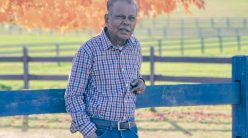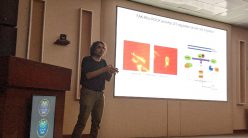A tribute to the life and achievements of the IISc alumnus who left his mark on Indian aerospace engineering
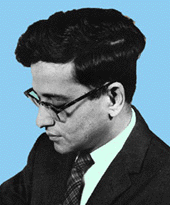
The name of Dr Sitaram Rao Valluri, who passed away on 23 January 2019, aged 94, will forever be linked with the National Aeronautical Laboratory (NAL; now National Aerospace Laboratories).
Valluri had many stellar accomplishments in his distinguished career, but his 19 long years (1965-1984) as NAL’s Director were so intense, passionate, and momentous that everything before and after those two decades pales somewhat in comparison.
Valluri was born in Eluru in Andhra Pradesh (AP) on 25 June 1924, as the first child in a family of 10 children. From his father, a doctor, Valluri inherited a liberal attitude, the virtue of being truthful, and a short temper, which, he candidly admitted, was always a trifle embarrassing.
Student days at BHU and IISc
The young Valluri, who apparently ran behind a light aeroplane while in school, was sure he wanted to become an aeronautical engineer. This wasn’t going to be easy for someone staying in the middle of nowhere in AP, but help came from an unlikely benefactor: India’s future President Sarvepalli Radhakrishnan. Then Vice-Chancellor of Banaras Hindu University (BHU), Radhakrishnan offered Valluri admission in BHU’s Engineering College in 1942 after reassuring himself that the young man had the requisite ability.
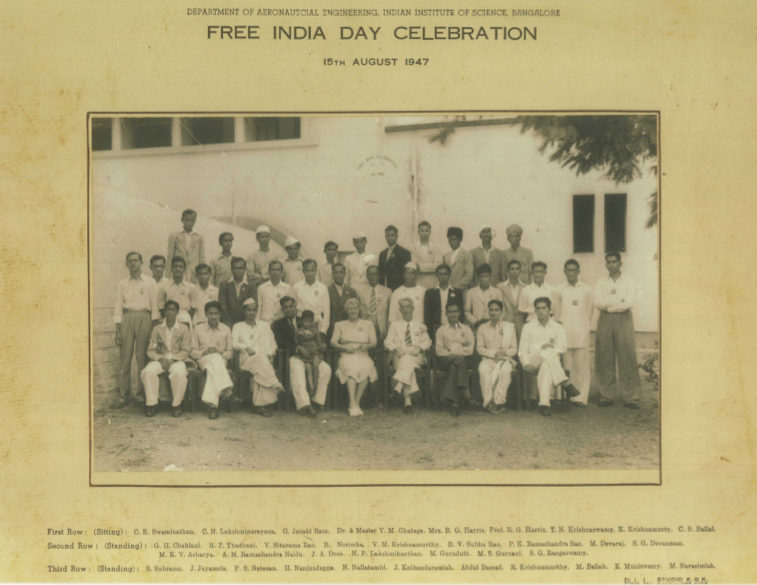
After obtaining his BSc (Engineering) from BHU, Valluri spent a few valuable years (1946-1949) at the Department of Aeronautical Engineering in the Indian Institute of Science (IISc), where he had the opportunity to interact with stalwarts like VM Ghatage and OG Tietjens. Then came the big moment: obtaining the Pauley Scholarship and joining the Guggenheim Aeronautical Laboratories at California Institute of Technology (Caltech) in September 1949.
Valluri at Caltech and Douglas
Caltech, and more generally USA, impressed and overwhelmed Valluri. There were opportunities to meet the aeronautics master and high priest Theodore von Karman; be a student of the brilliant Hans Liepmann; establish a lifelong friendship with Anatol Roshko; bond with that “extraordinary human being” Satish Dhawan (those days in Caltech); and suddenly realise that the person sitting next to you at the lunch table is Richard Feynman.
Valluri’s PhD adviser at Caltech was the brilliant Chinese scientist YC Fung, but it was Ernest E Sechler’s work, on design practices for aircraft structures, that excited Valluri the most. Sechler went on to become a mentor of sorts: he also probably opened doors that allowed Valluri to work as a design consultant for Douglas Aircraft Company during the late 1950s and early 1960s.
It was during this phase that Valluri established a considerable reputation as an expert in aircraft fatigue and fracture. His research interests were also getting more diverse: he enjoyed designing complex experiments with high-speed cameras, making intricate measurements, pondering over the parameters that influence fatigue crack propagation, worrying about factors that could lead to catastrophic fatigue failure etc. It wasn’t, therefore, a surprise when Valluri won the coveted Wright Brothers Medal in 1963. Valluri would later describe this as the “most satisfactory research period” in his life.
By end-1962, Valluri had logged in enough years with his “green card” to become eligible for US citizenship. Before taking the final leap across the Atlantic Ocean, Valluri decided to spend some time in India to test the waters back home. Not surprisingly, he received a lot of attractive offers: IIT Kanpur and IIT Madras wanted him; NAL’s first Director, P Nilakantan, wanted Valluri to start a new division on aircraft materials and structures; and Satish Dhawan, now back at IISc., encouraged Valluri to join him and Krishnamurty Karamcheti (they were all together at Caltech) to do something truly worthwhile and valuable for Indian aeronautics. This “strong compulsion to try to do something for the country that nurtured me,” eventually persuaded Valluri “to tear up (his) US green card”. He accepted the IIT Madras offer to be a Senior Professor.
Within months of joining IIT Madras, Valluri started getting disillusioned, and even considered the idea of returning to the US. But a series of events intervened to completely change the course of Valluri’s life: NAL’s Director P Nilakantan passed away suddenly on 18 April 1964; Karamcheti, who was the first choice to succeed Nilakantan, did not wish to give up his US citizenship, and Jagan P Chawla, who was the next choice, requested terms of appointment that were considered untenable. Eventually, the committee – of which Dhawan too was a member – picked Valluri, not yet 41, to become NAL’s second Director.
It was an inspired choice. Valluri suddenly found himself with an enormous empty canvas that he could paint any way he liked. It helped that his boss, CSIR’s Director-General S Husain Zaheer, was personally fond of Valluri (Zaheer’s relation with Nilakantan had been frosty). It helped even more that the Chairman of NAL’s Executive Council was the legendary JRD Tata (JRD) himself.
Director of National Aeronautical Laboratory
Valluri officially took charge on 23 November 1965, ignoring his father’s plea not to join on the inauspicious amāvásyā day. His first task as NAL Director was to make sure that Nilakantan’s big unfinished task, to build the 4 ft trisonic wind tunnel, never lost momentum or steam. It was a very special moment for Indian aerospace when the roar of the tunnel’s first blowdown reverberated across the (then clean and serene) Bellandur Lake on 29 May 1967. With characteristic candour and honesty, Valluri shrugged off all accolades: “I only had a small role to play here. Nilakantan had set everything up beautifully”.
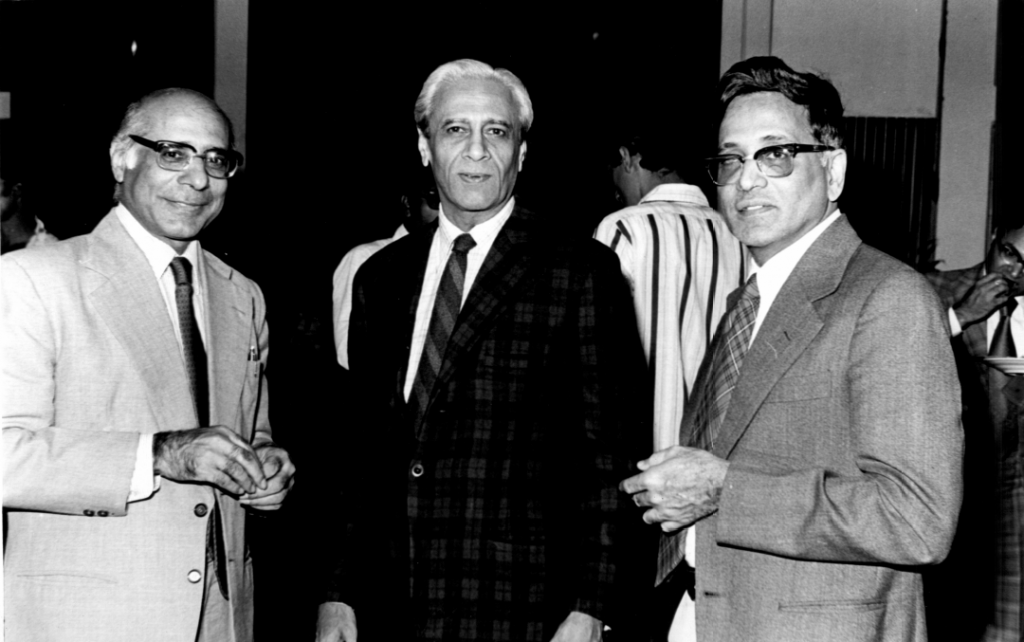
Valluri then moved – just as Nilakantan had earlier requested him – to create the Materials Science and Structures R&D divisions at NAL. To head the Materials Science Division, Valluri invited his colleague from IIT Madras, Sivaraj Ramaseshan; and virtually gave Ramaseshan carte blanche to grow the Division exactly as he wished. Ramaseshan was immensely capable and charismatic and proved to be a formidable and popular leader.
Given his research and consultancy experience in the US, relating to structural integrity of aircraft, one guesses that Valluri intended to play a more active personal role in the Structures Division. But as he became aware of the onerous responsibilities and challenges of leading a national R&D lab, Valluri consciously backed away from personal technical work; indeed, Valluri would, for the rest of his life, vehemently argue that hardcore research was inimical to the responsibilities of a top-flight R&D manager and leader.
By deliberately walking away from serious personal research – which entailed some risk, given how an individual’s worth is evaluated even now in national labs – Valluri gave himself, instead, the opportunity to become an outstanding R&D leader and create processes and mindsets that significantly improved NAL’s performance.
Valluri ran NAL in ways that directors of most other CSIR labs – still practicing the prevalent bureaucracy of the times – couldn’t even have imagined. Just as an example, Valluri started embellishing the NAL campus with a wide variety of trees. And when JRD expressed some unhappiness with NAL’s buildings, Valluri decided that he would design NAL’s new buildings himself. As someone who spent two decades constantly stepping in and out of these buildings, I can confirm that the buildings had pleasing and comfortable architecture, functionality and aesthetics. It seems so appropriate that NAL’s biggest auditorium, conceived by Valluri, is today named after him.
But arguably Valluri’s biggest game-changer in his early years as Director was to introduce project accounting at NAL. The classical CSIR budgeting schema only had account ‘heads’ for salaries, capital expenses, consumables, maintenance, travel etc., but didn’t report expenses project-wise. “I had no clue how much money we spent on each project, or which was the division on which we spent the most money. This simply wasn’t on,” Valluri would later explain. It would take CSIR thirty more years to implement the project monitoring process that Valluri first introduced at NAL in 1966!
Another remarkable facet of Valluri’s leadership was his relentless resolve to attract the best talent to NAL; equally, he was intolerant of what he called ‘second-rate’ persons. “If you appoint a second-rate person today, you would inevitably attract a third-rate person tomorrow, and the first-rate person would tend to leave,” he often used to say. Valluri’s benchmark for a likely first-rate person was having a Ph.D. degree, and he packed NAL with Ph.D.-degree holders (he often exulted that NAL had more scientists with a Ph.D. than all of DRDO and ISRO put together). Considering the intellectual ferment visible at NAL, especially during the 1970s and 1980s, one would have to agree with Valluri’s appraisal. Better still, there was absolutely no bias of gender, region or religion in any appointment that Valluri ever made or permitted. CSIR – NAL’s parent body – considered Valluri’s evaluation model to be so effective that they asked him to draft the CSIR-wide selection and appraisal criteria for all scientific and technical positions.
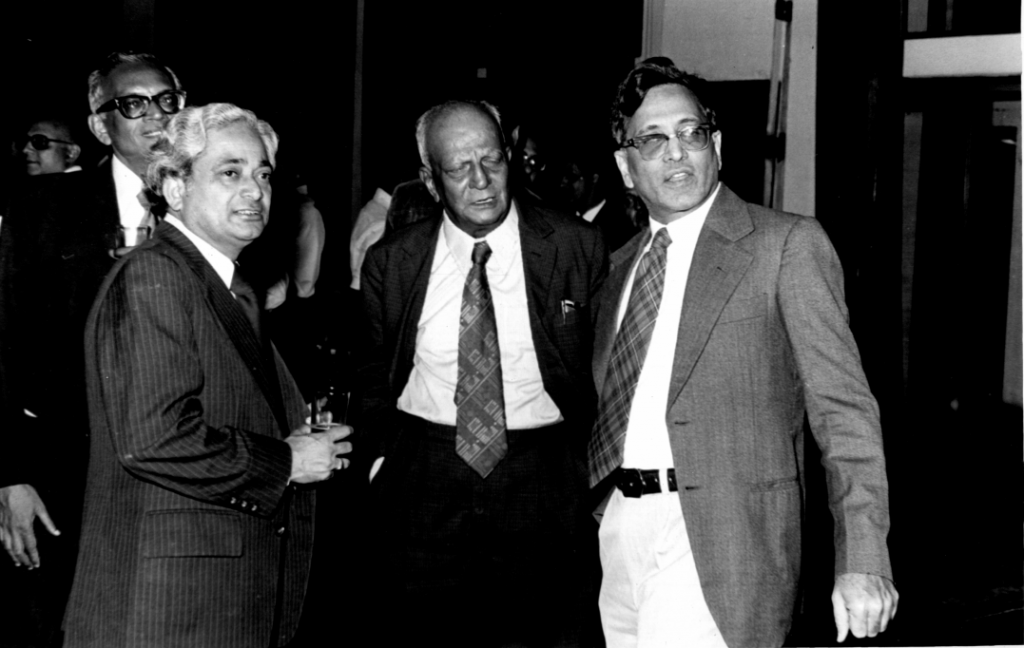
As NAL’s Director, Valluri had an electric presence. He walked briskly, talked rapidly and bristled with energy. He took decisions, and made things happen. Often big decisions required the concurrence of CSIR HQ, so the impatient Valluri would fly to Delhi to argue his case and quickly close the matter. There were occasions when Valluri’s decisions evoked dismay or discord, but he rarely flinched: “I’m here to run a national lab, not win a popularity contest,” he would declare matter-of-factly.
Valluri also realised that, to succeed as Director, he needed to be strongly connected with NAL’s natural partners: IAF, HAL, IISc and DRDO. In particular, Valluri always hit off very well with the IAF top brass, with the Air Chief often becoming a personal friend. An outstanding outcome of NAL and IAF working together was the full-scale fatigue testing facility that NAL created in the early 1970s. This facility allowed the IAF to significantly extend the service life of its operational aircraft such as the Gnat, Ajeet and, later, the MiG-21s.
As Valluri grew in stature and success, awards and distinctions started coming his way. He was elected Fellow of the Indian Academy of Sciences in circumstances that can be best described as unusual. While speaking at the Academy about crack propagation in 1970, C V Raman suddenly asked Valluri to define a crack. Raman was so impressed with his reply that he remarked that Valluri deserved to be a Fellow. The Fellowship came in 1971, just after Raman passed away. Valluri would receive the Padma Shri in 1974 and the Vasvik Award in 1978.
“He built NAL”
Making NAL the best lab in CSIR wasn’t just Valluri’s endeavour; it was his crusade. He created NAL’s grand foundation; but, just as important, he also created a formidable supporting infrastructure. Visiting NAL’s library used to be a thing of joy, NAL’s photo and printing facility was led by arguably Bangalore’s best photographer of the time, and NAL’s health centre offered excellent medical care. It was in the fairness of things that NAL’s doctors intervened successfully to diagnose Valluri’s meningitis as he collapsed into a deathly coma in February 1989.
How would one rate Valluri’s performance as NAL Director? Without a doubt, it was exceptional, but, rather curiously, the Valluri years overlapped with a period when Indian aeronautics itself went into a bit of a coma. After the heady adventures of the 1950s and the 1960s, there was a lull in the 1970s following the HF-24 crash on 10 January 1970. NAL, however, continued to prosper: Valluri initiated the first moves to develop composite technologies, built remarkable capability for failure analysis and accident investigations, created even more testing and modelling infrastructure, and lobbied for funds so that NAL could build its first small plane. This prompted Satish Dhawan to remark that NAL looked like “a beautiful bride, all decked up, but with nowhere to go!”
So where could this beautiful bride go? The 1980s held great promise, and Valluri was eager and excited. Having been Director, NAL for over a decade, and being actively involved in every national initiative in aeronautics, Valluri held the vantage position. His big dream was to help create an Aeronautics Commission, serviced by a Department of Aeronautics, along the lines of the Space and Atomic Energy Commissions. The Aeronautics Commission would integrate aircraft research, design, development, manufacture and operations under a single umbrella.
It always seemed like a bridge too far. In an informal conversation at an awards event, Professor Roddam Narasimha, who would succeed Valluri as NAL’s third Director, asked Prime Minister Indira Gandhi why her government didn’t support programmes in aeronautics the way it supported programmes in space and atomic energy. The PM replied that she would “if everyone stopped quarrelling”.
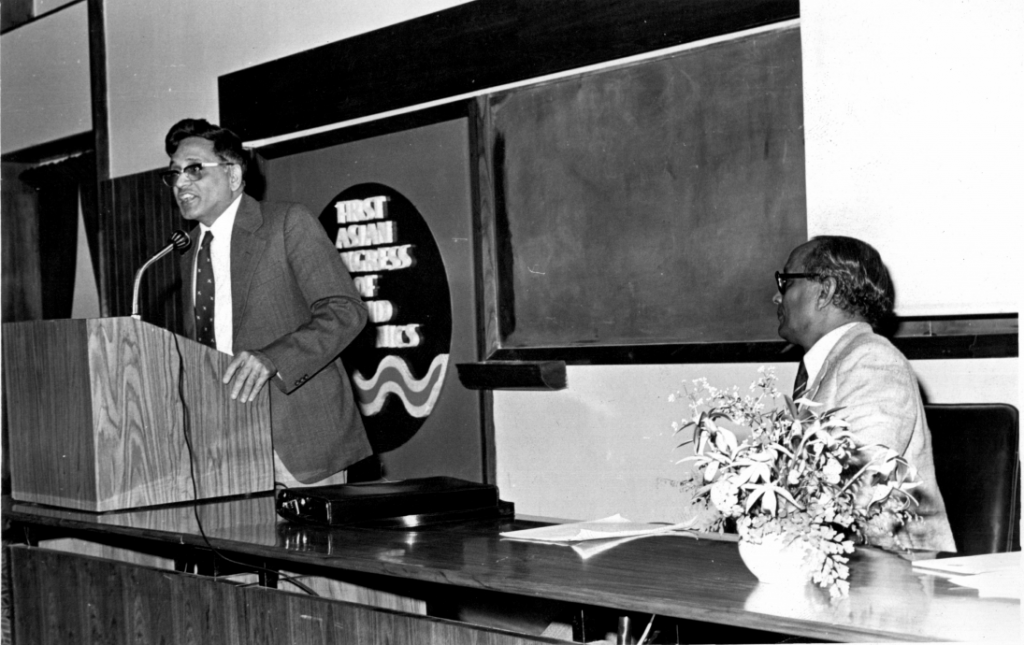
While the Aeronautics Commission never happened – and Valluri would regret this all his life – the next best thing did happen. Narasimha, who had taken time off from IISc to spend a few years at HAL in the late 1970s, argued that it was both feasible and desirable to build an Indian light combat aircraft (LCA) in large numbers. Narasimha’s arguments achieved a rare resonance: IAF changed its perception, and Raja Ramanna, then the Scientific Adviser to the Defence Minister (SA to RM), was sufficiently enthused to ask Narasimha to lead a team of experts from IAF, HAL and DRDO to visit Germany, France, Sweden and England to obtain more insights and data. The team returned with a unanimous verdict endorsing the LCA concept. For the first time all the principal actors in Indian aeronautics appeared to be on the same page.
In response, the Government invited Valluri to head a high-level committee, which included all the big aeronautical players such as IAF, HAL and DRDO, and of course Narasimha, to make the final recommendation on the light combat aircraft (LCA) concept. The earlier Narasimha committee had said the LCA could be done; the new Valluri committee had to decide if the LCA should be done and how. After a detailed feasibility exercise, the Valluri committee gave the formal ‘can-go-ahead’ verdict – again unanimously. It took Defence Minister R Venkataraman just two minutes to clear the LCA programme!
There was never any doubt who would lead the LCA programme. It had to be S R Valluri. A new entity, Aeronautical Development Agency (ADA), was created to fund, manage and monitor the LCA programme, and Valluri would be its Director-General (DG-ADA).
Director-General of Aeronautical Development Agency
Valluri assumed office as DG-ADA on 2 July 1984, after receiving a fond and emotional farewell from NAL; I remember being chosen to hand him a bouquet at the farewell event because I was then NAL’s youngest scientist. Valluri didn’t merely transform the contours of NAL during his 19 years, he also completely changed the context of my life by offering me a position at NAL. I shall always be immensely grateful to him for that.
ADA, which was to build India’s first supersonic fighter, didn’t even have four walls when it started its existence. Valluri operated out of an NAL office – that we used to fondly call the ‘blue room’ because of its somewhat hideous blue carpet. I have memories of some truly enjoyable conversations with Valluri in the blue room: he could be at his eloquent best when he talked of self-reliance in aeronautics or of Caltech’s ‘honour code’. I also became familiar with Valluri’s favourite expressions: It was immediately apparent that ‘apparently’ was a word that he truly relished, then there was ‘high-science-high-technology’, and, above all, the most intriguing ‘Hobson’s choice with a Faustian bargain’. Valluri was such a charming and adorable old man!
It was hard to kick-start ADA – it is very hard to kick-start any new establishment with public funding – but Valluri invested all the energy and passion that he could, and NAL, now under Narasimha’s tutelage, responded with commendable alacrity: The Advanced Composites Unit was off to a promising start (today’s LCA, now called Tejas, has almost 45 percent composite structures), the wind tunnels started preparing in right earnest for the impending avalanche of tests, and ‘fly-by-wire’ soon became a buzzword in NAL’s corridors.
But all was not well with ADA’s (and Valluri’s) interactions with DRDO and its leadership. It would be pointless to talk, at this juncture, about events in 1985 that led to Valluri and Raj Mahindra’s exit from ADA. Valluri felt hurt and aggrieved – and even privately speculated how the story would have panned out if he had accepted the Government’s offer to become SA to RM in 1981. Raj Mahindra, on his part, cheerfully moved on to the next aircraft design adventure involving NAL’s light transport aircraft (LTA, now SARAS) and passed away peacefully in his sleep in 1995 while, very probably, dreaming of some aerofoil contour.
Retirement
Valluri’s early retirement years were not the most comfortable; he must have felt like a batsman hoping to hit a century but being suddenly given out lbw for 62. To make things harder, his pension was meagre, and would stay meagre till his US Social Security benefits kicked in early 1988.
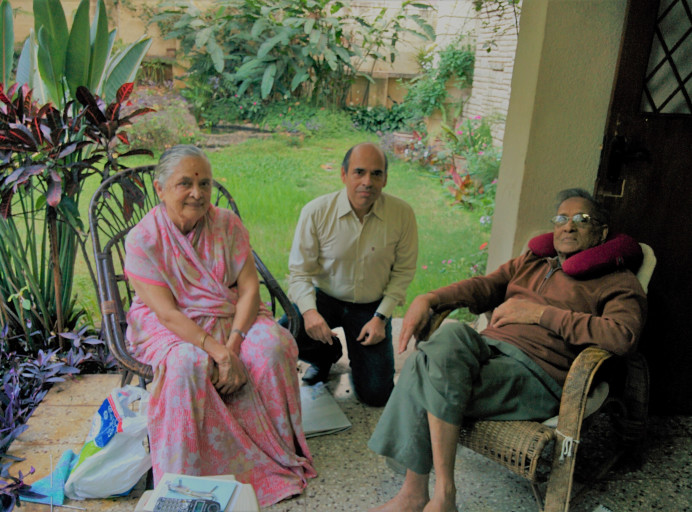
But Valluri plunged headlong into other interesting ventures: realising that Bangalore’s HAL airport would soon start choking, Valluri prepared a comprehensive plan about how and where Bangalore’s new airport should be (one of Valluri’s recommendations was indeed an airport beyond Yelahanka at Devanahalli; another was to ‘take over’ the runway at Yelahanka Air Force Base and move the IAF base elsewhere).
Valluri also proposed a scheme to revise Bangalore’s house numbering. Alas this scheme never took off and Valluri lived all his life horrified how his house number 659 on Indiranagar’s 100 ft Road was barely a hundred feet away from house number 284.
For some years into retirement, Valluri also readily accepted invitations to speak at public functions. His talks were always scintillating: he had great stories to tell, a commendable turn of phrase, a twinkle in the eyes, and unabashed honesty. Most of all, he had a phenomenal memory, both for names and numbers. At one of his lectures I was surprised to see him read from a prepared text. I confronted him: “Please don’t ever do that again. It cramps your style!” Valluri admitted that he was “beginning to forget a few things,” but promised to resume his extempore style.
All his life Valluri championed ethical professional practices and personal honesty. His criterion to judge the integrity of every action was to ask: “Would Satish (Dhawan) approve?” Valluri would be outraged every time he saw a lapse, digression or failure, and spoke out (and wrote) loudly against the misdemeanour. He could get really angry and it was hard to face his wrath. But he was always open to dialogue and debate and did not hesitate to apologise publicly if he discovered that he had erred.
I last met Valluri when U N Sinha and I went to greet him on his 93rd birthday. He seemed only slightly frail, and easily recognised both of us. He spoke for a few minutes with customary warmth, provided us a brief glimpse of the famed Valluri charm, but then lapsed into silence. We knew it was time to go, and, deep down, I sensed that this would be our last meeting.
Valluri was a towering Indian. We will miss him.
Srinivas Bhogle headed NAL’s Information Management Division for many years, and reported on practically everything that happened in and around NAL during the period 1986 to 2006.
This piece was originally published on Srinivas Bhogle’s personal blog, Bademian.



